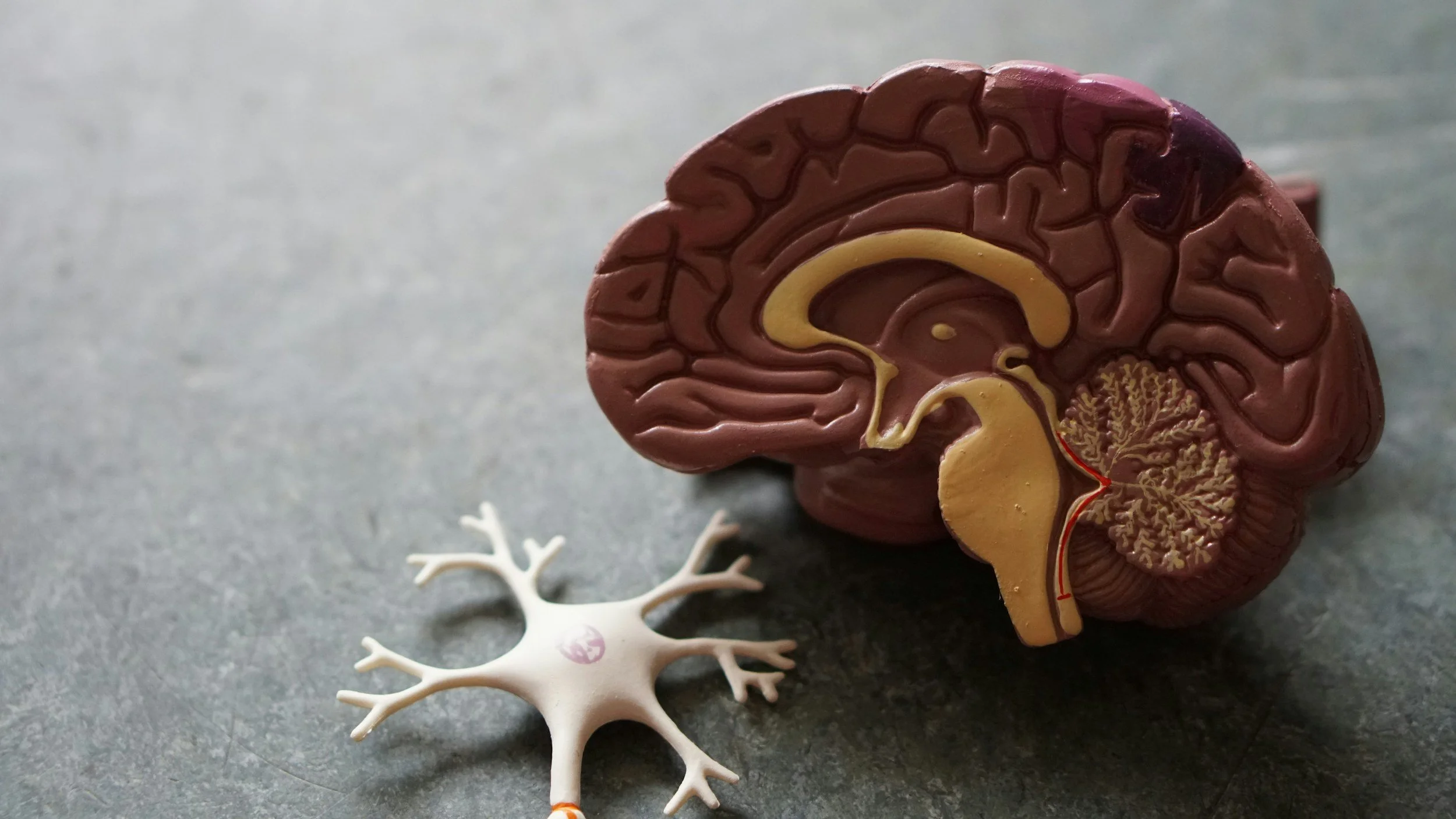
Brainspotting
What if the healing you have been searching for lies within your own body’s intuition?
Brainspotting is a cutting-edge, evidence-based therapeutic approach that helps access and process deeply rooted emotional and physical trauma. While talk therapy engages the thinking mind, Brainspotting works directly with the deeper, primitive regions of the brain, such as areas responsible for emotion, memory, and survival responses. Brainspotting locates points in the client’s visual field that help to access unprocessed trauma in the subcortical brain. By guiding you to specific eye positions (“brainspots”), Brainspotting taps into the brain’s natural ability to locate and release trauma stored in the body, while also strengthening internal resources and resilience.
Brainspotting is highly effective for individuals experiencing:
Anxiety and depression
Complex trauma (C-PTSD), PTSD, and trauma recovery
Stress, burnout, and overwhelm
Performance blocks (sports, arts, public speaking, career, etc.)
Attachment wounds and relational issues
Chronic pain and somatic symptoms
Whether you’re seeking to overcome past wounds or improve your mental wellness, Brainspotting offers a gentle yet transformative path forward.
Who can benefit from Brainspotting?
Why choose Brainspotting?
Whole-brain approach: Brainspotting engages both the mind and body; Tapping into trauma held beneath conscious awareness in the brainstem and midbrain.
Evidence-based: Supported by neuroscience and clinical studies for trauma resolution and emotional regulation.
Body-based mindfulness: Brainspotting emphasizes somatic awareness, which can be especially beneficial for clients who find traditional approaches overwhelming.

“Where you look affects how you feel."
— David Grand, PhD (founder of Brainspotting)
If you’ve tried traditional talk therapy but still feel stuck, or if you’re navigating a challenging season in life, Brainspotting can offer a new pathway to relief. Contact me today to reclaim balance and schedule your first Brainspotting session!
Frequently Asked Questions
-
Brainspotting is both a diagnostic and therapeutic technique that uses the brain’s natural self-scanning and self-healing abilities. It works by identifying specific eye positions (“brainspots”) that access the deeper regions of the brain where trauma may be stored. These brainspots are often revealed through subtle reflexive cues like eye twitches, facial movements, or changes in posture, which are signals that may occur outside your conscious awareness.
I help you stay connected to that brainspot while your brain and body begin to process the unresolved material. The method is often enhanced by BioLateral sound, which supports regulation and integration by gently activating both hemispheres of the brain. This approach allows for deep, focused healing, while keeping you safely within your window of tolerance.
-
Each Brainspotting session lasts 60 minutes and is offered virtually, so you can participate from the comfort and safety of your own space. You’ll begin by briefly discussing your goals, and then be guided to notice where in your visual field you feel the most emotional or physical activation (or calm). This becomes your “brainspot.”
During the session, you may listen to BioLateral sound through headphones to support deeper processing. You’ll focus on body sensations, thoughts, or emotions that arise; Without needing to analyze or explain them.
You remain fully in control of the pace and content, and I’m there to support you in staying grounded and attuned throughout the experience.
-
The short answer is, YES!
Brainspotting is an evidence-based modality supported by neuroscience and clinical research. It’s recognized for its effectiveness in treating trauma, emotional dysregulation, anxiety, and performance blocks.
Emerging studies show Brainspotting activates the brain’s subcortical structures (where trauma is often stored) and facilitates neurobiological healing and emotional regulation.
Read about additional studies here!
-
Brainspotting and EMDR are both effective, brain-based therapies used to process trauma, and they share some similarities, like the use of eye positions and bilateral stimulation.
However, Brainspotting is often experienced as more intuitive, gentle, and somatically attuned. Many clients find Brainspotting to be less intrusive and more flexible, allowing them to follow their internal process without needing to retell or relive traumatic experiences.
It’s particularly supportive for those who may feel overwhelmed by more directive approaches, offering a grounded, mindfulness-based path that honors the body’s natural pace!
-
Your window of tolerance is the emotional bandwidth where your nervous system can safely engage in healing without becoming overwhelmed (hyperaroused) or shut down (hypoaroused).
Brainspotting helps you stay within this window, supporting sustainable and effective trauma resolution. This concept is core to Brainspotting’s approach, to ensure healing occurs in a way that feels safe and empowering, not retraumatizing.
-
To get the most out of your Brainspotting session, the following are recommendations to prepare beforehand:
A quiet, private space where you feel safe
Headphones or earbuds (the audio track should be evenly heard in both ears)
Water, tissues, fidgets (and any other comfort items)
Blanket, sweatshirt, or something to help regulate your temperature
A sleep mask, bandana, or eye covering
A pointer object (pen or something similar)
Best practices:
Use a desktop, laptop, or tablet, placed on a stable surface, close to eye level
Minimize distractions: Mute notifications, close other apps, keep interruptions away
Audio device: A separate device (like a phone, iPod, or tablet) to play the Brainspotting BioLateral audio track. Using a different device than the one for the video call is ideal to avoid sound conflicts. If you must use the same device, be prepared to adjust volume levels to balance the telehealth call and the audio track.
BioLateral audio track recommendations:
Brainspotting Playlist - David Grand
Biolateral Music - Youtube
60-minute soundtrack - Christine Ranck
Bodhi Tree Bilateral Albums
You can also search “biolateral music” on your preferred streaming music app.
-
I am Phases 1 & 2 Trained through the Pacific Brainspotting Training Center, with (Certified Trainer) Lisa Larson.
I offer Brainspotting virtually and have experience supporting clients through this modality online.
As a Certified Trauma Professional (CTP), I am deeply trauma-informed, ensuring your healing journey is conducted in a safe, supportive, and compassionate space tailored to your unique needs.
-
All attendees/clients are required to complete an informed consent waiver, prior to services, which includes the following:
Risks and Benefits:
Brainspotting is a powerful, evidence-based modality that helps access and process deep-seated trauma and emotional distress. Many clients experience profound relief, improved emotional regulation, and increased self-awareness. However, as with any therapeutic process involving trauma work, some risks exist. These may include temporary increases in emotional intensity, the surfacing of difficult memories or feelings such as sadness, anxiety, anger, or discomfort, and physical sensations related to trauma release.It is important to know that these reactions are often part of the healing process. You are encouraged to openly communicate and proceed at a pace that feels safe and manageable. Brainspotting is conducted within a supportive therapeutic relationship designed to keep you within your window of tolerance.
Contraindications:
Brainspotting may not be appropriate for everyone at all times. Please consult with your provider/physician before beginning Brainspotting therapy if you have any of the following conditions or situations:Active psychosis
Recent traumatic brain injury (within the last 3 months)
Seizure disorders or epilepsy (if untreated or unstable)
Your safety is paramount. If you experience any unusual physical or emotional symptoms during or after a session, please notify me immediately and seek medical advice as appropriate.
Aftercare:
Following a Brainspotting session, your brain and body may feel physically and emotionally tired, as processing trauma requires significant energy and focus. It’s important to practice gentle self-care by resting, staying well-hydrated, and eating nourishing meals to support your brain’s healing work. Avoid stressful situations when possible, and give yourself space and time to integrate the experience fully. Taking a walk or engaging in light movement can also help ground your nervous system.



